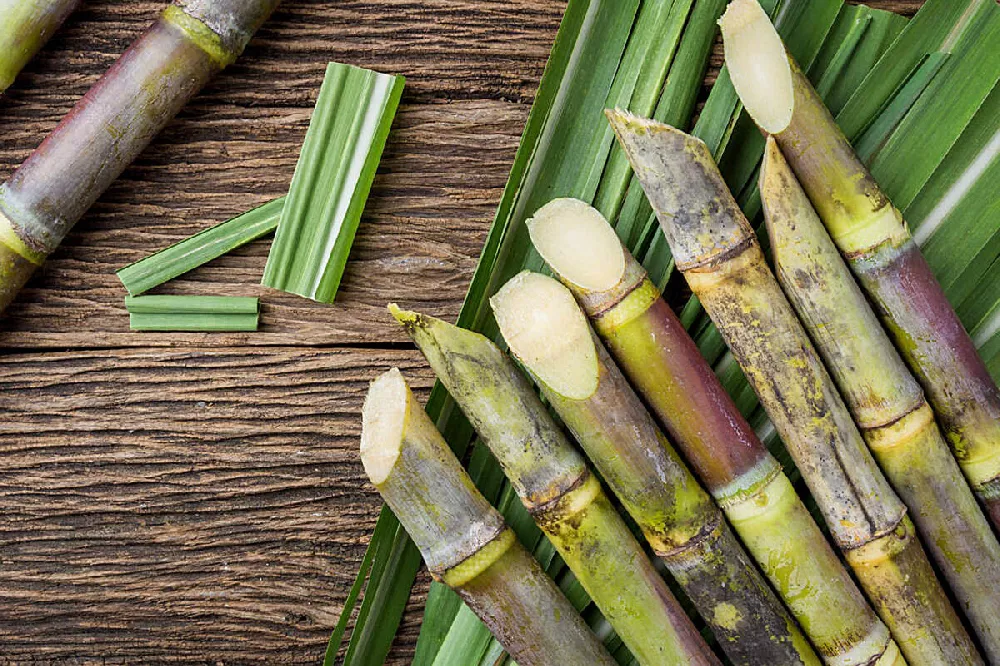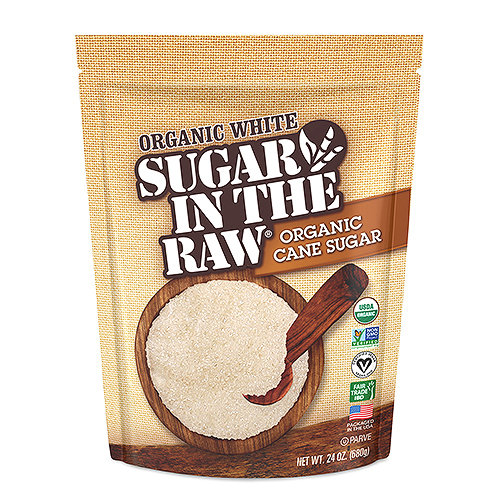Cane Sugar Processing: Ingenious Methods for High Quality Manufacturing
Wiki Article
A Thorough Overview to the Ecological Influence and Sustainability Practices in Cane Sugar Processing
The environmental effect of walking stick sugar processing provides a complicated variety of obstacles that warrant mindful assessment. From dirt destruction and too much water use to the carbon impact associated with cultivation and production, the consequences of conventional methods are significant. In contrast, the adoption of ingenious sustainability procedures uses a path towards a lot more accountable manufacturing techniques. Comprehending the interplay between these issues is important for stakeholders in the market. What particular practices can be implemented to strike a balance in between efficiency and environmental stewardship? The responses exist in a better take a look at both the challenges and potential remedies.Summary of Walking Cane Sugar Processing
Walking stick sugar handling involves a collection of methodical steps that change sugarcane into refined sugar. Originally, gathered sugarcane is carried to refining facilities, where it undergoes cleansing to remove dirt and particles. Following this, the walking stick is squashed to extract juice, which is after that clarified by eliminating contaminations with home heating and the addition of lime.The made clear juice undergoes dissipation, where water is gotten rid of to concentrate the sugar material. This concentrated syrup is then taken shape with air conditioning, allowing sugar crystals to create. These crystals are separated from the staying syrup making use of centrifugation, resulting in raw sugar. To accomplish polished sugar, the raw item undergoes additional filtration procedures, which may include cleaning and filtering system to get rid of continuing to be impurities and color.
The final item is then dried out and packaged for circulation. Throughout this whole procedure, maintaining efficiency and quality assurance is vital to guarantee the sugar satisfies industry standards. Each action in walking cane sugar handling not just adds to the last item yet also has implications for resource use and waste generation, setting the stage for discussions on sustainability and ecological influences linked with sugar production.
Ecological Obstacles of Manufacturing
The manufacturing of walking cane sugar offers numerous considerable ecological difficulties that warrant interest. One main worry is the extensive use agrochemicals, consisting of pesticides and fertilizers, which can lead to dirt destruction, biodiversity loss, and contamination of neighborhood water sources. The overflow from sugarcane fields typically brings these chemicals into nearby ecosystems, disrupting marine life and impacting the health of communities reliant on these water bodies.An additional difficulty is the high energy intake connected with sugarcane processing. The boiling and refining stages call for significant warmth, mostly produced by burning fossil gas, adding to greenhouse gas emissions. In addition, the extensive acreage needed for sugarcane farming can lead to logging and habitat destruction, more worsening climate adjustment and threatening wild animals.
Additionally, the labor practices in some areas increase moral worries, as workers might face inadequate working conditions and poor earnings. This situation usually continues a cycle of poverty in regional communities. Cane Sugar Processing. Attending to these environmental difficulties is crucial for establishing much more lasting practices in walking stick sugar production, eventually profiting both the atmosphere and the areas involved in this sector
Water and Land Use Effect
Water sources and land usage are vital components in the walking cane sugar market that considerably affect the environment. The growing of sugarcane calls for substantial their website water input, with quotes suggesting that it can take in approximately 2,000 litres of water per kilo of sugar produced. This intensive use water typically brings about depletion of neighborhood water sources, impacting not only the sugarcane vineyards but likewise bordering ecosystems and areas that rely upon the very same water sources for agriculture and residential usage.
Additionally, land usage for sugarcane growing can bring about deforestation and the conversion of all-natural environments into monoculture haciendas. This method lessens biodiversity, disrupts neighborhood communities, and adds to dirt deterioration. The development of sugarcane fields often intrudes on beneficial agricultural land, producing competitors for resources between food and biofuel manufacturing.
Lasting practices, such as enhancing watering strategies and executing plant turning, are necessary to alleviate these influences. By adopting much more effective water use and land monitoring strategies, the walking stick sugar industry can decrease its environmental impact, guaranteeing a balance in between agricultural efficiency and ecological conservation.
Greenhouse Gas Emissions
Greenhouse gas exhausts stand for a substantial environmental issue within the walking stick sugar handling sector, specifically as farming techniques increase to fulfill international need. The growing of sugarcane, a crop that thrives in tropical climates, counts greatly on synthetic plant foods and chemicals, which add to nitrous oxide emissions. Additionally, land-use changes, including deforestation for new sugarcane ranches, release co2 kept in vegetation and dirt.During processing, power intake is one more major resource of greenhouse gas exhausts - Cane Sugar Processing. Lots of sugar mills see this here use fossil fuels to power equipment and produce heat, causing substantial carbon footprints. Additionally, the transport of raw sugarcane and ended up products adds layers of emissions via fuel combustion in automobiles
The advancing effect of these discharges intensifies environment modification, posing threats not only to the setting however likewise to the long-lasting stability of the market. Stakeholders must identify the urgent demand for comprehensive approaches that deal with these exhausts. This involves assessing current agricultural techniques, processing approaches, and transportation systems to determine locations for enhancement and reduction. Attending to greenhouse gas exhausts is necessary for fostering an extra sustainable walking cane sugar industry in an altering environment.

Lasting Practices and Innovations
Sustainable practices and technologies are progressively essential in the cane sugar handling market as stakeholders look for to decrease ecological effects while maintaining performance. One significant innovation is the application of incorporated crop monitoring, which optimizes source use by integrating dirt administration, parasite control, and crop turning techniques. This approach improves return while reducing chemical inputs and maintaining soil health and wellness.Moreover, the adoption of eco-friendly energy sources, such as biomass from sugarcane deposits, has gotten grip - Cane Sugar Processing. By converting waste items into energy, refining facilities can minimize their dependence on fossil fuels, thus decreasing greenhouse gas emissions
Water administration techniques have actually also seen enhancements via the recycling and reusing of water in handling plants, considerably minimizing freshwater intake. Innovations in technology, such as precision farming, make it possible for farmers to monitor crop health and wellness and resource use better, guaranteeing sustainable growing techniques.
Additionally, qualification programs like Fair Profession and Rain forest Partnership urge environmentally responsible farming practices and promote social equity within the supply chain. By embracing these sustainable practices and innovations, the redirected here cane sugar processing industry can enhance its resilience and contribute favorably to ecological stewardship.
Verdict
The ecological influence of walking cane sugar handling provides considerable difficulties, including soil degradation, high water consumption, and greenhouse gas exhausts, along with ethical issues connected to labor practices. Addressing these concerns via sustainable methods, such as integrated crop monitoring, eco-friendly power adoption, and water recycling, is important. By promoting environmentally liable and socially equitable techniques in sugar production, the industry can minimize its negative results, making sure a much more sustainable future for both neighborhoods and ecosystems associated with this sector.Cane sugar processing involves a collection of systematic actions that change sugarcane right into refined sugar. Each action in walking stick sugar processing not just adds to the last product yet also has ramifications for resource usage and waste generation, establishing the phase for discussions on sustainability and environmental influences connected with sugar production.
Greenhouse gas exhausts stand for a substantial environmental concern within the cane sugar processing market, especially as farming practices increase to satisfy international demand.Lasting techniques and innovations are increasingly crucial in the cane sugar processing sector as stakeholders seek to decrease ecological impacts while preserving performance.The environmental influence of cane sugar processing offers significant challenges, consisting of dirt degradation, high water usage, and greenhouse gas exhausts, alongside honest worries connected to labor practices.
Report this wiki page